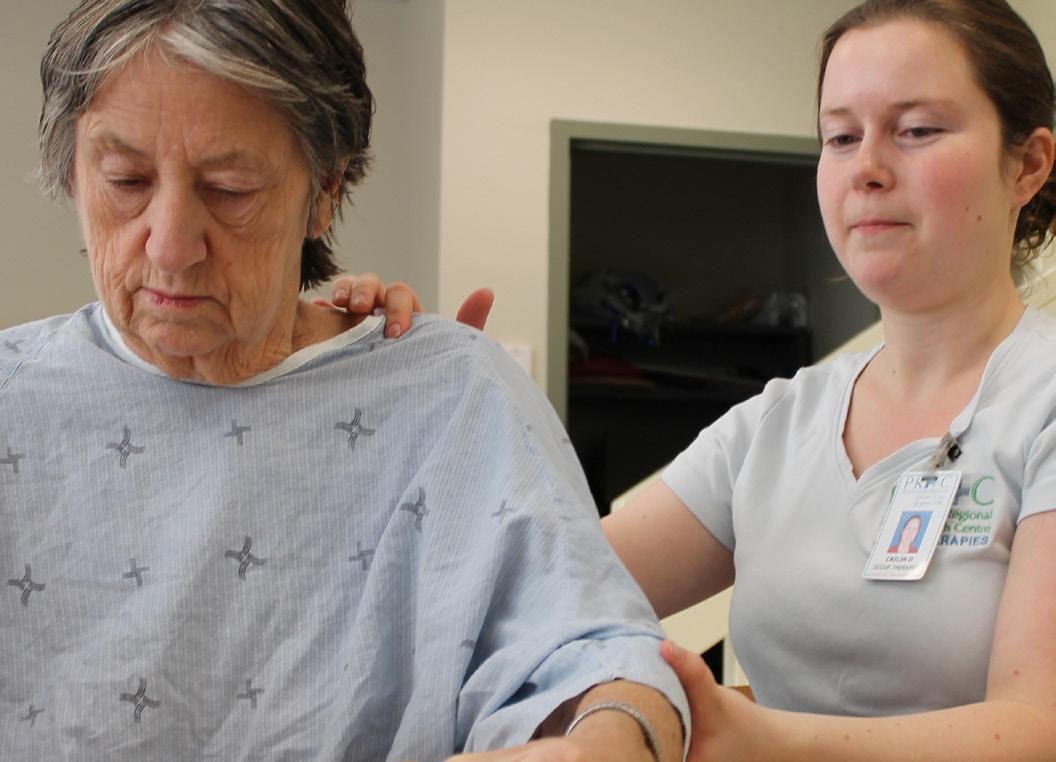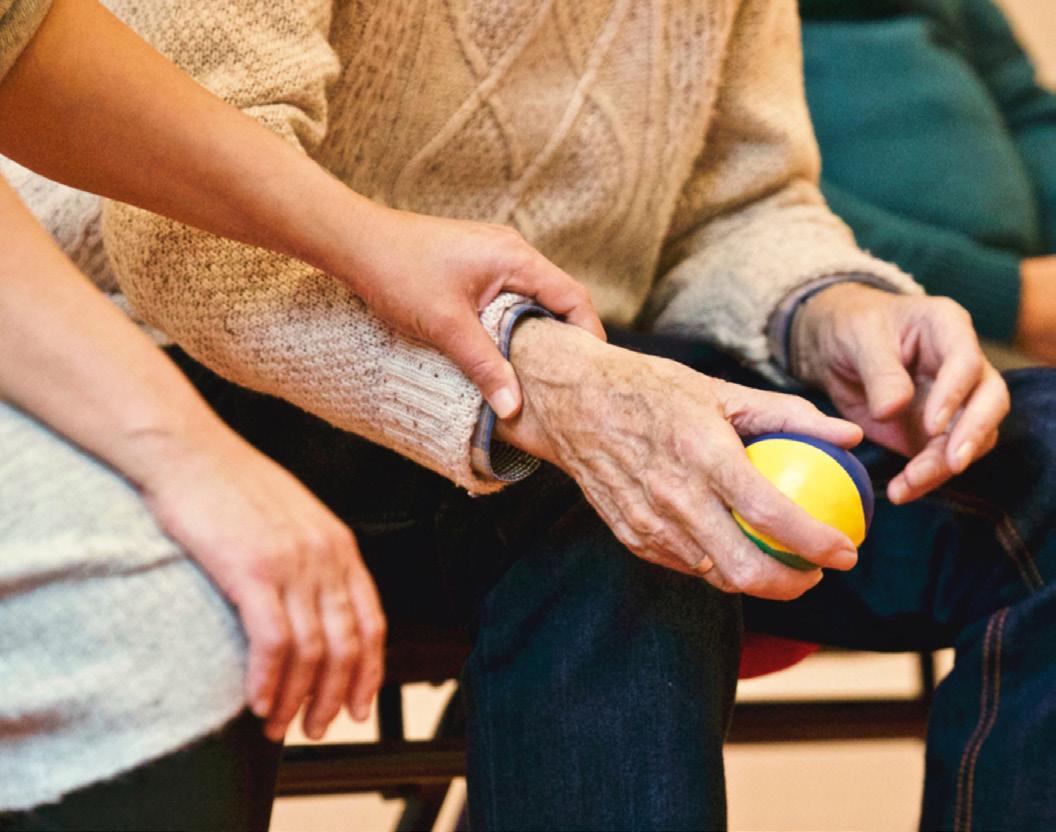
2 minute read
How can I help?
A Stroke Recovery Guide for Families
After a loved one has had a stroke, many families and friends are unsure of how to help the patient. This guide includes some recommendations.
Advertisement
Build a positive healing environment
Bring clothes and personal care items from home (comb, toothbrush, etc.).
Until the patient’s swallowing is assessed, it is important that patients do not drink or eat to prevent choking/pneumonia. Check with the nurse before bringing in food/drinks.
Bring in familiar photos (pets, family, etc.). Please label the photos so staff can use them in therapy.
Support nursing staff by assisting them with basic care (washing hands and face, combing hair, mouth care).
Encourage family and friends to visit for short periods; just being there is supportive.
Celebrate progress, no matter how small.
When possible, take your family member for a walk/ride around the facility. Make sure to ask your nurse beforehand.
People who have suffered a stroke are at higher risk for depression. If you notice a change in your family member’s mood, let the doctor or nurse know.
Hand/Arm Stimulation
Massage affected hand/arm with unscented lotion in an upward motion (towards the elbow).
Encourage them to try to move the hand and fingers often. Be gentle!
Mentally “practice” movements that are still too difficult to complete.
Encourage use of weak side in daily tasks, whenever possible. Try to hold objects such as the toothbrush while applying toothpaste.
Respect Rest
Encourage naps: Curtains closed and lights off when possible, one (1) to two (2) times per day as needed.
Have your loved one wear ear plugs if noise is a problem.
Decrease Boredom:
Bring in cards, puzzles, games, newspapers, books, a phone or a tablet.
Communication Strategies
Encourage any type of communication (speech, gestures, writing, pointing, etc.).
Ask yes or no questions.
Provide 2–3 choices in your questions.
Encourage the patient to speak slowly, loudly, and exaggerate mouth movements.
Give one direction or instruction at a time with gesture.
Orientation
Write date on the white board and discuss it.
Discuss where they are and why they are in the hospital.
Discuss current events/things of interest.
Have regular conversation, like you normally would with that person.
Create a journal of your family member’s progress and review it with them.
Have a clock in the patient environment that is visible when in the room.
Stimulate the ‘neglected’ side
Sit on the weak side when visiting your family member.
Massage the weak arm/leg.
Bring their attention to the weak arm if it is hanging by their side or in an awkward position in bed.
Adjust the position of their arms and legs to prevent this.
Encourage them to try to move the weak arm/hand.
Ask them to identify objects/people on that side of the room
Ask them to identify all items on their meal tray.
Shoulder protection
Support the shoulder on the patient’s weak side – don’t leave it hanging.
Rest the weak arm on a pillow or in the persons lap to take weight off the shoulder.
Never pull on the weak arm when helping the person to move.
Assisting with therapy
Talk with the therapists/nurses about your questions and concerns – you are always welcome to attend therapy sessions.
Promote self–care. Find out what your family member can do alone or with little help (e.g. self-feeding, brushing teeth and hair).
Avoid doing things for them that they can do on their own, even if it takes a long time to complete the activity.
Mouth care is very important to prevent pneumonia. Help your loved one brush their teeth before and after meals and before bed.
Binders help to keep education and therapy information organized and easy to access; please feel free to bring one in for your family member.
Encourage your family member to practice what is being learned in therapy.
Let us know your family member’s hobbies and interests to help us with their therapy.





